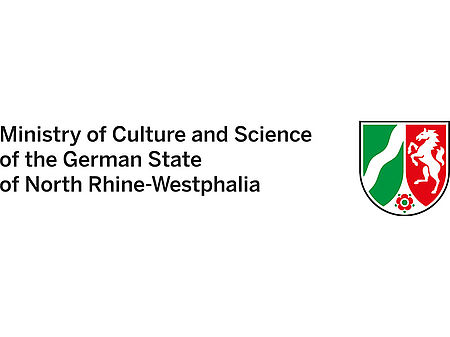Policy / guidelines
Guidelines on publishing content in PUBLISSO – Repository for Life Sciences
Version 1.2 dated 06.09.2024
Background
ZB MED offers a complete publishing service for open access publications through its PUBLISSO ‒ Repository for Life Sciences (FRL in its German abbreviation). Authors ‒ whether scientists, researchers or academics ‒ can use the repository to digitally publish and preserve a variety of content, including text-based publications, audiovisual media, research data and software, as well as other types of publications and accompanying materials from the field of life sciences.
The system offers a number of standout features. These include links to BASE, DataCite and LIVIVO ‒ ZB MED’s search portal for life sciences ‒ as well as linked open data technologies that significantly improve the findability and interoperability of research results.
The FRL ensures the content it offers is freely accessible to readers worldwide, and it strives to publish all resources online as fully open access. In this context, the term ‘open access’ refers to the free availability on the public internet of scientific literature, data and related materials as set out in the Berlin Declaration on Open Access to Knowledge in the Sciences and Humanities. Thus, the FRL’s mission is to enable users to read, download, copy, distribute, print, search and link to the full texts of digital publications, and to use them for any other lawful purpose, without financial, legal, or technical barriers.
PUBLISSO supports a comprehensive open science approach and follows the Guidelines for Safeguarding Good Research Practice published by the German Research Foundation (DFG). It also take active steps to promote and practice a quality-oriented approach to research data management, including by applying the FAIR data principles.
The overarching goal is to make sustainable improvements to the communication and visibility of research in the life sciences. PUBLISSO’s comprehensive publishing and consulting service is specifically designed to help users meet this goal. More information on open access is available on our website.
Publication types
The FRL accepts a wide range of publication types, including journal articles, book chapters, conference papers, congress proceedings, research data, research reports, theses and videos.
Our publishing service enables all the published content to be stored and accessed, and is free for resources up to a capacity of one terabyte.
For larger amounts of data, PUBLISSO charges the cost of hosting and managing the data for the minimum storage period of ten years. Please contact us for more information.
Acceptance criteria
Submitted publications should be thematically related to the life sciences.
Works already accepted for publication elsewhere must already have been authorised or published by the publishing institution (for example on the institution’s or author’s website) and/or must originate from a quality-controlled journal.
Research data can also be published in the FRL, either separately or in conjunction with scholarly publications.
Rights and responsibilities of rights holders
Works must be made available for publication together with quality-assured metadata.
The FRL encourages any submitted publications to be published under an open access licence (e.g. a Creative Commons licence). Our guidelines adhere to the FAIR principles, in particular the principle of publishing data “as open as possible, and as closed as necessary”. The selected licence is to be specified in the metadata.
Responsibility for the content of the publication and compliance with third-party copyright and exploitation rights, as well as the upholding of data protection standards, lies with the publication’s authors and rights holders. The authors/rights holders grant the PUBLISSO ‒ Repository for Life Sciences a non-exclusive right of use, which means they retain the right to publish their work in other places.
In order to ensure the discoverability, usability and content integrity of works over the long term, the authors/rights holders grant ZB MED the right to undertake technical preservation measures involving the published digital objects for the purposes of long-term archiving.
Access
Every work published in the FRL is accompanied by structured metadata. A persistent identifier is assigned to any work that does not yet have one; the FRL uses the Digital Object Identifier (DOI) from DataCite for this purpose. A DOI is a way of uniquely and permanently identifying a work, so that it can remain findable and citable in the long term.
In order to protect the authors’ right of first use, publications can be published with an embargo period of no more than two years (depending on the publication type). Once the embargo period expires, the digital objects are made publicly accessible. Descriptive metadata is publicly accessible even during the embargo period and can be referenced using a DOI.
As a general rule, authors/rights holders cannot request the deletion of digital objects. Only in certain justified cases will a request to withdraw and block access to a digital object be upheld, for example in cases involving corrupted files or legal problems. In this case, the metadata will remain permanently accessible together with a note stating that access to the file has been blocked.
Data structure
Each work is described with a set of metadata elements and published in the FRL with a DOI. A work may consist of an individual file or multiple files.
The FRL’s goal is to maintain the work’s original data structure, using subfolders to represent hierarchical structures. When submitting multiple files, we recommend that the authors/data providers clearly describe the desired structure in order to facilitate reuse.
Each file name within a data package must be unique, and spaces, umlauts and special characters must be avoided to ensure UTF-8 compliance. ZB MED reserves the right to amend file names containing special characters in order to ensure interoperability.
File formats
Files must not be encrypted, password-protected or protected against printing or copying of content.
The following formats are preferred:
- PDF format for text publications;
- JPG format for image publications;
- MP3 format for audio publications;
- MP4 format for video publications.
Other formats may be acceptable by prior arrangement.
Research data comes in a variety of types and formats due to the many different research and survey methods used to collect it. As a general rule, the formats used to publish research data should comply with the standards of the discipline concerned, and the software used (including the version number) should be specified in the accompanying documentation (e.g. the metadata or readme file).
ZB MED recommends using common open file formats such as CSV, PDF/A, TXT, XML, SGML and TIFF, or formats based on these. These formats are currently regarded as easy to interpret, and they can be migrated to new file formats with minimal losses should the corresponding software no longer be available.
We also recommend making the content available in exchange formats in addition to publishing the content in the original file. As a general rule, proprietary file formats should be avoided in order to facilitate usability and digital preservation in the future. Codes and scripts should be prepared according to coding best practices.
Quality assurance
Rights holders are responsible for their works in accordance with the Guidelines for Safeguarding Good Research Practice and the FAIR principles. ZB MED reviews the metadata provided with each work and reserves the right to make additions and corrections where necessary. Where required, ZB MED can provide advice on this issue before submission.
ZB MED also takes reasonable steps to check the formal and technical quality of the submitted data and accompanying materials. Should this prompt any queries, the FRL staff will get in touch with the rights holders.
If technical preservation measures are carried out on files in ZB MED’s digital long-term archive and metadata are added, these are made available in the FRL for further use and marked accordingly if required.
Storage/retention
The FRL is designed to ensure that the works it contains will remain available in the repository for at least ten years from their date of publication.
ZB MED also pursues a broader long-term archiving strategy using the Rosetta digital preservation software in cooperation with Germany’s two other specialist national libraries (TIB – Leibniz Information Centre for Science and Technology and ZBW – Leibniz Information Centre for Economics).
Once a digital object has been fully processed, including enrichment with metadata and assignment of a DOI, the work is transferred from the FRL to ZB MED’s long-term digital archive. Here, it is stored indefinitely, insofar as this is technically feasible based on the nature of the files and metadata. ZB MED's long-term digital archive was certified by CoreTrustSeal in 2024.
Technical operation and data security
The FRL was developed by the North Rhine-Westphalian Library Service Centre (hbz) in cooperation with ZB MED. hbz runs the repository in its data centre using an open source software solution called to.science; in its role as a service provider, hbz ensures the proper operation of the repository.
The repository is operated on hbz’s own hardware in accordance with its internal IT strategy. This covers all aspects required to ensure secure and stable operation of the system (downtime generally < 2 working days).
Contact
Contact
Repository for Life Sciences
Related links
PUBLISSO – Repository for Life Sciences
Publishing in the repository
FAQs
Copyright policy
Guidelines on publishing content in PUBLISSO – Repository for Life Sciences. 2024, V1.2 (pdf)




